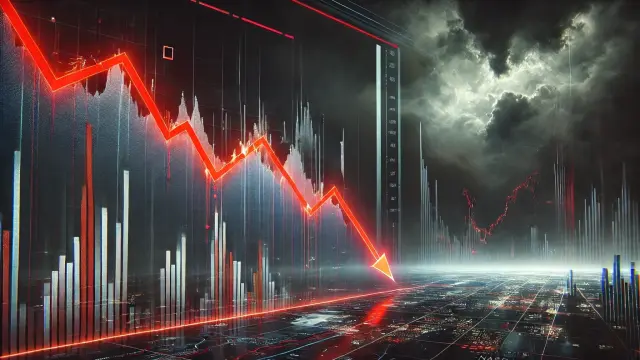Ransomware Threats & Defenses in 2025
Ransomware attacks are becoming more sophisticated and frequent, targeting businesses, hospitals, and governments. Learn how to defend against them effectively.
Ransomware Rising
What is Ransomware?
Ransomware is a form of malicious software that encrypts files or locks systems, demanding payment (ransom) to restore access. It’s one of the most damaging forms of cyberattacks globally.
Types of Ransomware
-
Crypto Ransomware: Encrypts files and demands a decryption key in exchange for ransom.
-
Locker Ransomware: Locks users out of systems without encrypting files.
-
Double Extortion: Threatens to leak sensitive data if ransom isn’t paid.
-
Ransomware-as-a-Service (RaaS): Allows cybercriminals to rent ransomware tools.
Recent Ransomware Trends (2024–2025)
-
Rise of AI-enhanced attacks that bypass detection systems
-
Targeting critical infrastructure (hospitals, water plants, energy grids)
-
Attacks timed with public events or holidays for maximum disruption
-
Cryptocurrency payments make attackers harder to trace
-
Emergence of triple extortion (data theft + DDoS + ransom)
Industries Most Affected
-
Healthcare: Hospitals face life-threatening disruptions
-
Education: Universities lose sensitive student and research data
-
Government: Local and national agencies often pay due to urgency
-
Finance: Customer data and transactions are prime targets
-
Retail and E-Commerce: Payment systems and logistics can be frozen
Case Studies
-
Colonial Pipeline (USA): A ransomware attack shut down 45% of fuel to the East Coast in 2021—still influencing regulation today
-
Costa Rican Government (2022): Paralyzed multiple ministries, declared a national emergency
-
MGM Resorts (2023): Suffered major disruptions to hotel operations and customer service
Common Attack Vectors
-
Phishing emails with malicious attachments
-
Compromised Remote Desktop Protocol (RDP) connections
-
Vulnerabilities in outdated software
-
Malicious ads or infected websites (drive-by downloads)
-
Unprotected VPNs and IoT devices
Ransomware Delivery Lifecycle
Reconnaissance: Identify weak entry points
Initial Access: Exploit vulnerabilities or phish credentials
Payload Delivery: Deploy ransomware
Encryption: Lock or steal data
Demand: Present ransom note
Optional Leak: Threaten data exposure
The Cost of Ransomware Attacks
-
Global ransomware damages expected to exceed $30 billion in 2025
-
Average ransom demand in 2024: $1.5 million
-
Recovery costs (downtime, lost data, IT services) are 5–10x the ransom
-
Organizations that pay often get hit again
Should You Pay the Ransom?
-
Experts advise against paying, as it encourages more attacks
-
Paying doesn’t guarantee data recovery
-
Legal implications depending on the country (e.g., paying sanctioned groups)
-
Better to focus on prevention, detection, and recovery
Defensive Measures for Organizations
-
Regular data backups (offsite and offline)
-
Endpoint detection and response (EDR) tools
-
Zero Trust Architecture: Assume breach; verify all access
-
Network segmentation: Limit lateral movement
-
Patch management: Close software vulnerabilities
-
Security awareness training for employees
-
Incident response plan: Ready procedures to minimize damage
For Individuals
-
Don’t click suspicious links or open unknown attachments
-
Use antivirus software and keep it updated
-
Regularly back up personal files
-
Keep OS and applications updated
-
Be skeptical of urgent pop-ups or ransom demands
Government and Law Enforcement Actions
-
CISA (US) issues alerts and guidelines
-
Europol and Interpol working globally to dismantle ransomware gangs
-
Cyber insurance is being restructured to avoid enabling payments
-
Countries tightening regulation on cryptocurrency laundering
Tools for Ransomware Protection
-
Bitdefender GravityZone
-
CrowdStrike Falcon
-
SentinelOne
-
Sophos Intercept X
-
Malwarebytes Anti-Ransomware
-
Backups with Acronis, Veeam, or Google Vault
Recovery Steps After a Ransomware Attack
Isolate the infected systems
Alert cybersecurity teams and stakeholders
Do not reboot without consulting experts
Use backups for data restoration
Notify law enforcement and relevant authorities
Analyze how the breach happened
Strengthen defenses to prevent recurrence
Looking Ahead
-
AI-driven ransomware will challenge traditional defenses
-
Quantum encryption may be used to protect data
-
International cooperation will play a critical role
-
Cyber hygiene and employee vigilance will remain critical
Conclusion
Ransomware is not just a technical issue—it’s a business and societal threat. Early prevention, employee education, and robust recovery planning are the most powerful weapons against it.






























